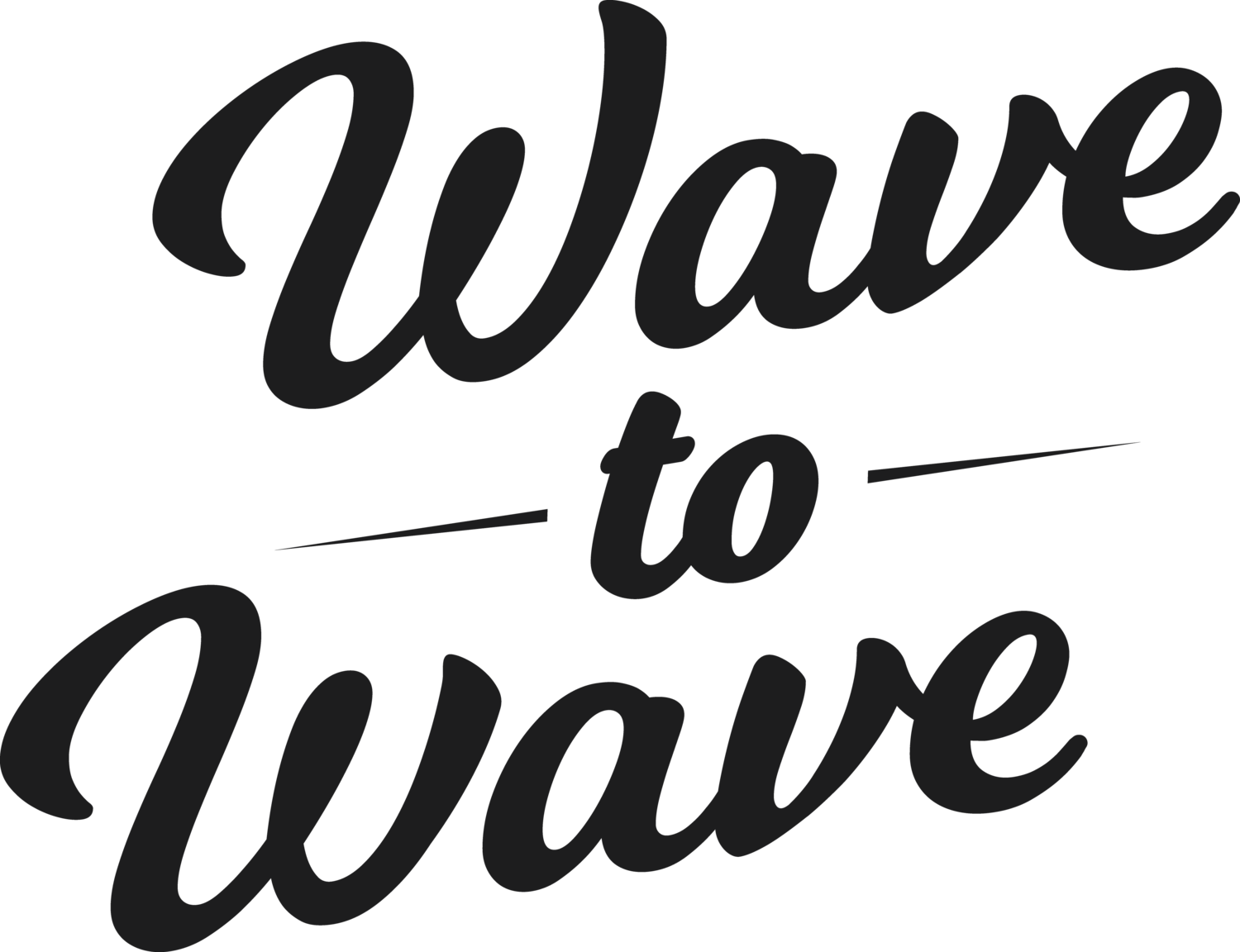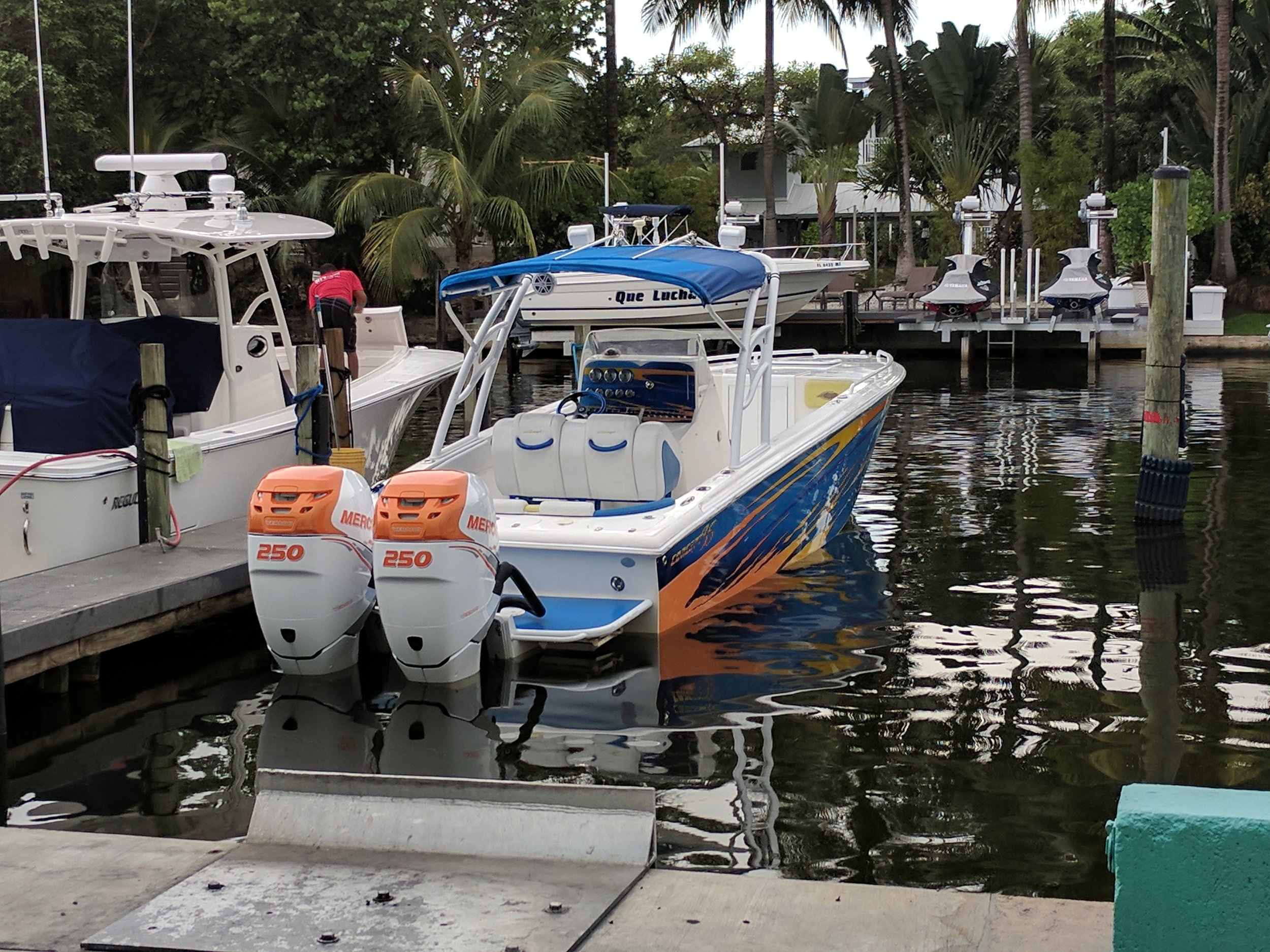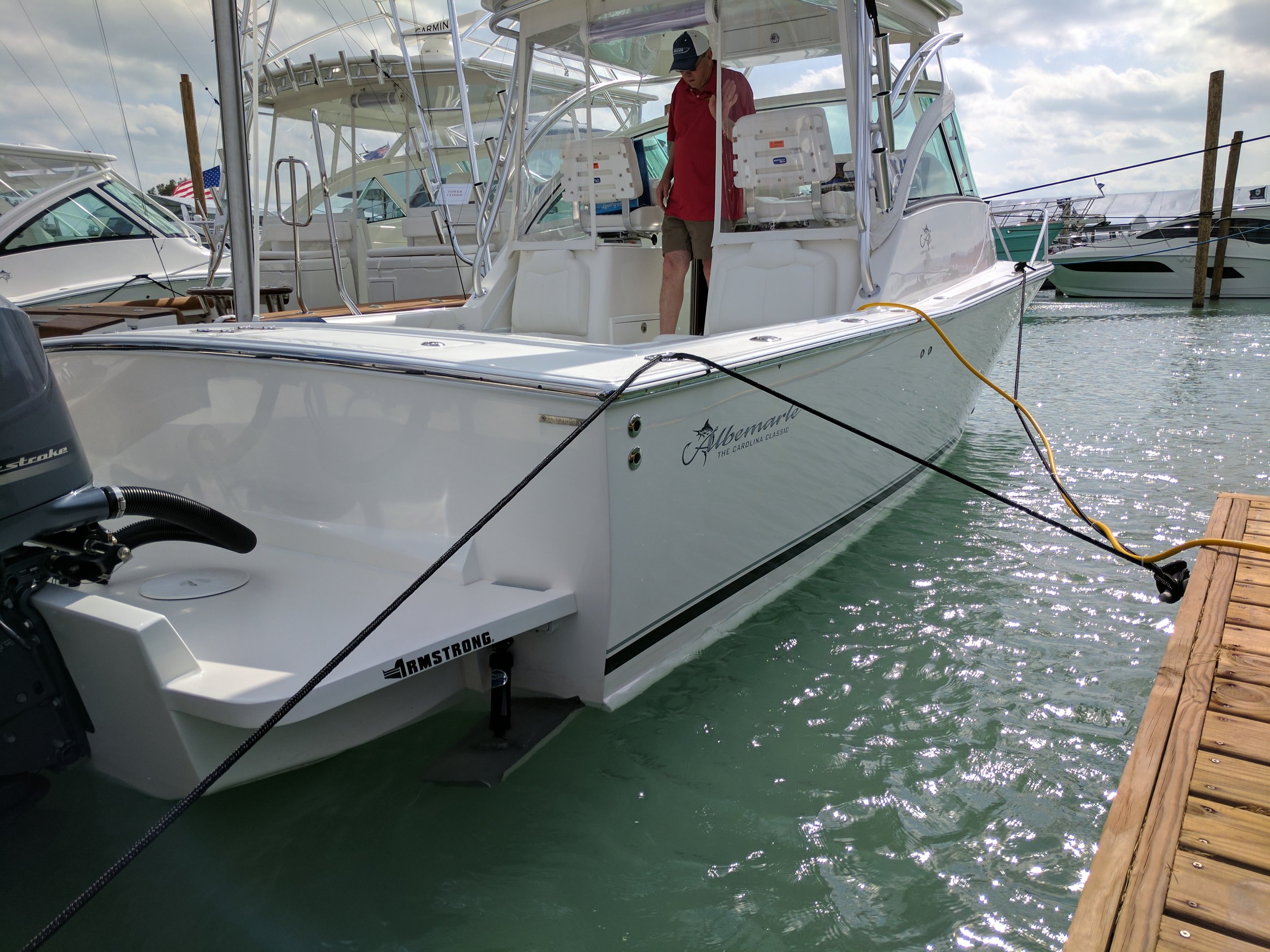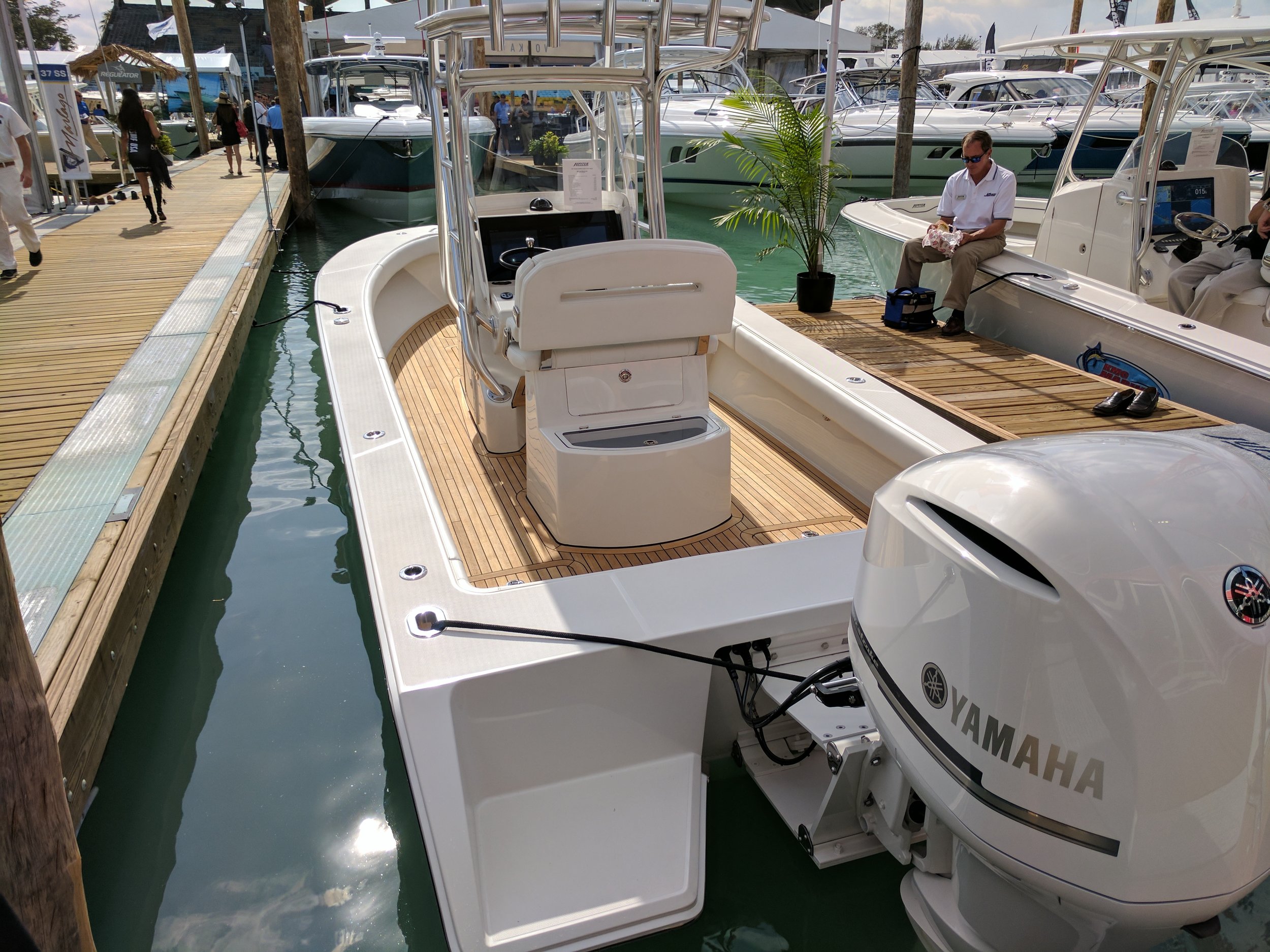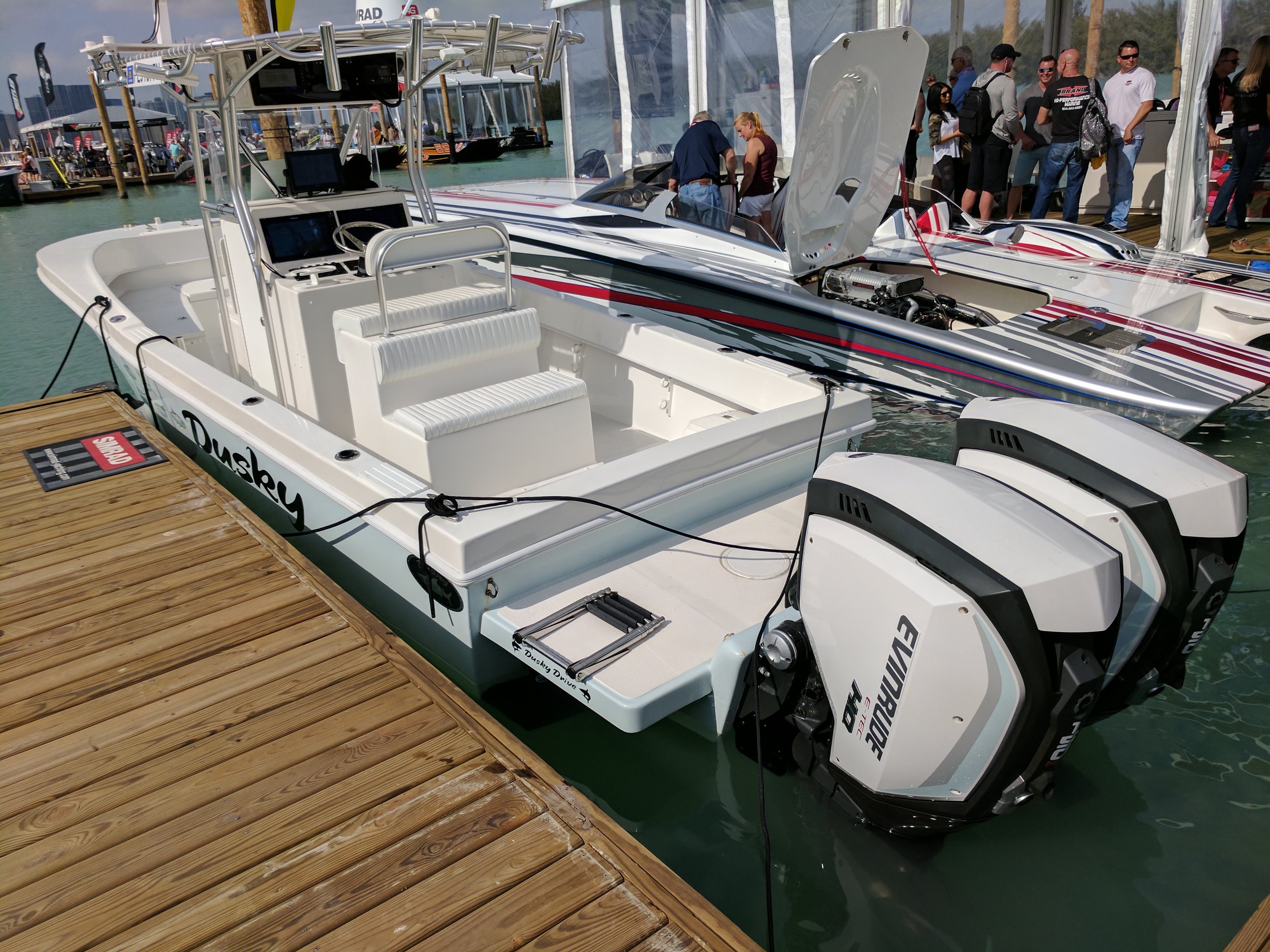Outboard Conversion: Repower
In the boat industry in general, there is an undoubted trend in outboard powered boats of all kinds, including performance boats. We have covered it in many articles including one called “Offshore Resurgence,” where some traditional sterndrive models were converted to outboard models by the manufacturer. You see these conversions in restorations quite often too. With this article we want to look at some new outboard models offered, a few ideas about converting your boat to an outboard and a couple things you can expect when doing it.
New Boats
There has been a few surprises at recent boat shows where very traditional manufacturers modified existing models, or introduced new models to accommodate outboards. Big manufacturers like Regal and Formula offered some family boats and cruisers converted to outboard and performance offshore orientated builders like Cigarette and Outerlimits started adding outboards to their lineup; Cigarette with newly designed center console boats and Outerlimits converting an existing hull. Others like Saber Marine, Checkmate Boats and Active Thunder have been doing it for a long time. The advantage being turnkey efficient power from modern outboards, ease of maintenance, cost and performance. Outboards have many advantages. Die hards will reminisce about the rumble of a V8 or the song of multiple V8 engines running in unison. But, even those guys might convert when they pull up to the gas pumps, or need to pull an engine for repair.
Bracket
This Formula 350 CBR uses an Armstrong bracket, tucked under the swim platform.
We will continue to see more models offered and with the success of bigger performance outboards like the Mercury Racing 400R, we will see more offshore hulls, more cats and singles on mid size boats that can utilize that much power. A 300 HP outboard or a 400 HP outperforms a sterndrive of comparable power in every way: overall weight, weight distribution and power efficiency (less power loss from crank to prop shaft).
Convert
What does this mean if you have an older offshore boat or mid size performance boat that needs a re-power? I think, depending on the design, you have to look hard at converting to outboard. It is not always practical but it could be fun. There are a few things to keep in mind but it is not a major engineering feat for most boats.
Many center consoles use brackets, like this Concept 35, and are often based on old offshore hulls
The transom is one hurdle as some boats have a molded in swim platforms with no flush surface, making it really difficult to add a bracket, but it’s still possible as some manufacturers have done exactly that by using an extended bracket underneath the platform. If you’re lucky enough to have a boat with a relatively flush transom, it’s quite easy to use an enclosed transom bracket or even an open setback bracket.
Enclosed Bracket
There are a few advantages of going with an enclosed transom bracket. When removing a single sterndrive and adding twin outboards, you may in fact be adding the same or more weight to the boat further aft. This means you may want the buoyancy that enclosed brackets offer. The bracket will be submerged at rest and help in that case. With a single to single conversion or twin to twin, it won’t be as big of a deal, in fact you may have the opposite problem, where you are reducing the weight overall by hundreds of pounds. You can do rudimentary water testing before you do the conversion to see how your hull will handle the weight distribution alteration. Have your mother in-law sit on the back for this.
When executed properly, an outboard conversion can look really clean, even factory OE clean like this restored Sutphen with twin Mercury Verados.
Another advantage is the rigging is hidden and run through the bracket and most have access panels built in, so installs are easy and clean looking. With the enclosed bracket, you now have a nice platform to stand on as well if you removed a swim platform or you had a flush transom before. Finally, the aesthetics are really good. Custom colored to match and even adding color matched non-skid to the top can make it look like a factory finish. Several manufacturers make brackets in an array of sizes for any type of engine configuration, making it an easy cost effective addition.
The Saber Marine 28 Offshore utilizes a Stainless Marine bracket for a clean look and a functional platform. Notice the access panel and hidden ladder, very functional.
Open Bracket
A simple open framed bracket is a solid solution on some boats. Again, many are made with semi-custom options for configurations to meet many different needs. You can incorporate jack plates and although the rigging will be not quite as clean as an enclosed bracket, they can look great. Depending on your transom height and design, you can possibly go straight to a larger jack plate or a combination of a bracket and jack plate, keeping in mind how far setback you want your engine. Again, you are changing the dynamics already, so drastic setbacks can seriously affect your boats performance. In most cases, you’re going to see improvements all around if executed properly.
Another nice thing as pointed out is the ability to add a jack plate, making adjusting your engine height possible. Lighter weight overall, better weight distribution and more efficient power means you could see decent improvement in overall performance. On average, HP to HP, an outboard will be about 5% faster. I have seen it done a few times, it’s really a cool project. Some boats make better candidates than others. If you’re restoring the boat or you are unsure, check with a professional fiberglass repair person to see if you need to reinforce your transom to accommodate the bracket.
This is a unique 30’ Skater “Prototype” that was converted to outboards by Skater Powerboats, and given a full repaint. This required transom reconfiguration and rear deck customization.
Power
I know of quite a few smaller offshore boats, under 30’ that would work great because re-powering with big blocks and drives can get pricey and they often respond really well to the weight further aft and being lighter overall. Outboards are so reliable and easy to maintain now, this is a great option on some boats.
Armstrong brackets are common on all types of boats and are often OE suppliers.
The Porta Bracket is unique and has a few advantages to its clever design. It's flush on the bottom so aids in planing instead of trapping water like some open brackets, plus it is completely height adjustable with ample set back. It is lighter than an enclosed bracket as well.
With the Evinrude G2 clean rigging, you get a very uncluttered transom and utility.
The Mercury Racing 400 ROS, just bolt it on. Lots of Outboard options in the 250 HP + range.
Stainless Marine of Miami is one of the bigger makers of brackets and a popular OE supplier.
This was an OE conversion by Baja, taking their 247 Islander and making it a 23 outboard. Not the best execution, and not a great hull to begin with, but it’s probably better overall than the sterndrive version.
